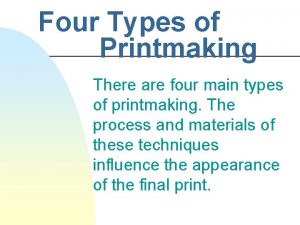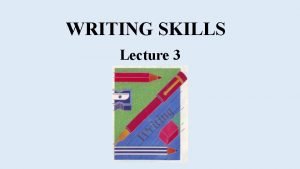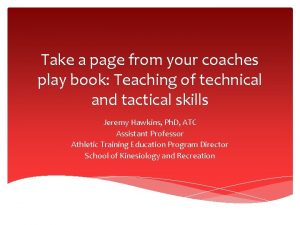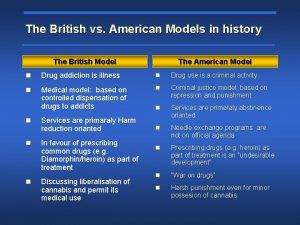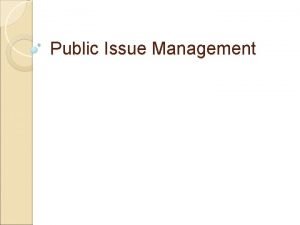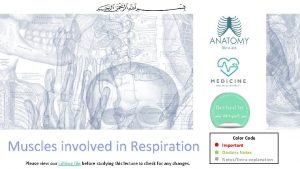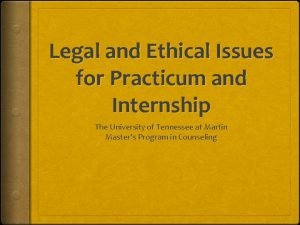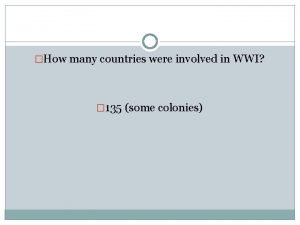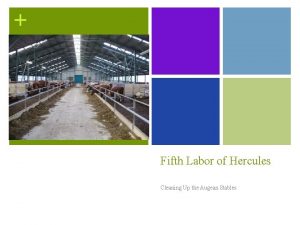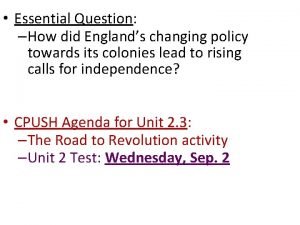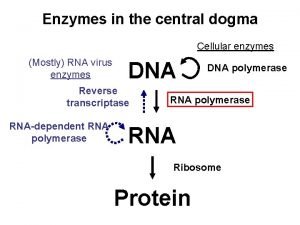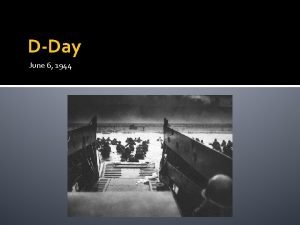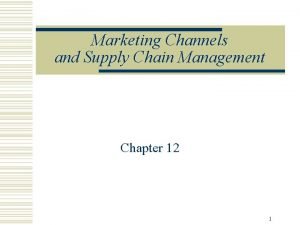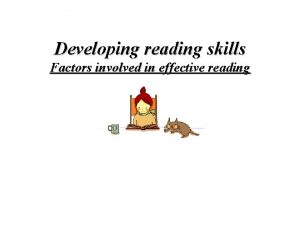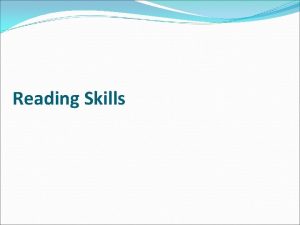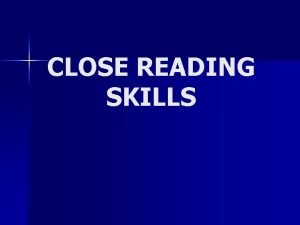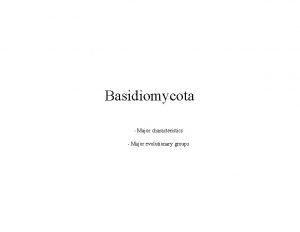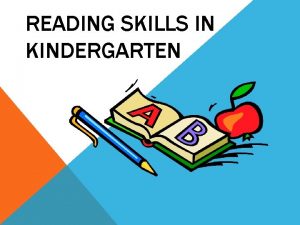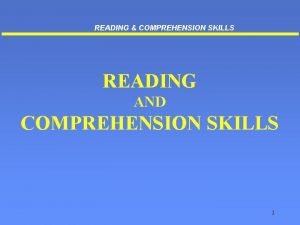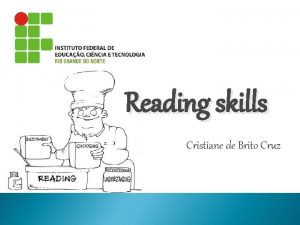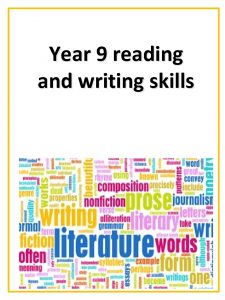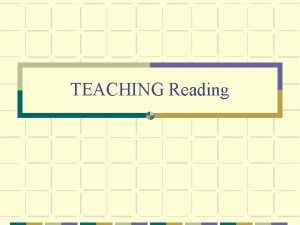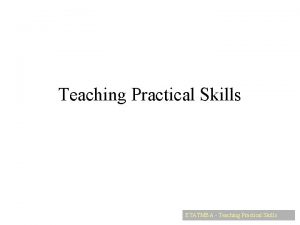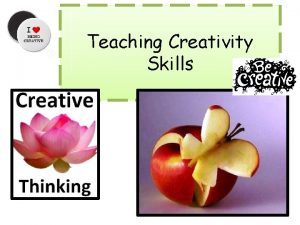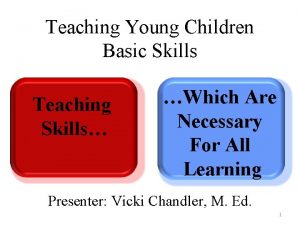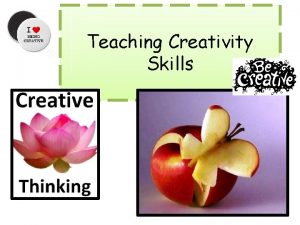Teaching Reading Teaching Reading Major contents skills involved


































- Slides: 34

Teaching Reading 主讲人:张敬彩

Teaching Reading Major contents skills involved in reading? principles What do people read? How do people read? ? common types of activities

Teaching Reading Major contents skills involved in reading? What do people read? How do people read? principles ? common types of activities?

Intensive reading It is accuracy-oriented. (for detail) Teaching reading

Teaching Reading How do we read? reading aloud vs. silent reading 1 manner 2 management in the classroom skills involved speed 3 purpose 4 5 activity type 6

How do we read? ! Teaching Reading What do effective readers do?

Teaching Reading Major Contents What do people read? How do people read? What are the skills involved in reading? ? What are the principles for teaching reading? What are the common types of activities in teaching reading?

What do people read? Teaching Reading In ESL/EFL textbooks: literary texts & simulated texts vs. genuine authentic materials —— Supplementary reading materials are needed.

What do people read? Teaching Reading Different types of texts require different reading skills and strategies.

Teaching Reading Major contents skills involved in reading ple o e p t do Wha read? le op e p do w o ? H read ? What are the principles for teaching reading? What are the common types of activities in teaching reading?

Teaching Reading Two broad levels of reading 1 visual signals from the eyes 2 levels of reading a cognitive task of interpreting the visual info. 2

Skills in reading comprehension ! ! Teaching Reading l Specify a reading purpose. l Plan the next step(s). l Preview the passage. l Predict the content of the passage. l Check predictions. l Skim the passage for the main idea. l Scan the passage for specific info. l Ask questions about the text.

Skills in reading comprehension ! ! Teaching Reading l Find answers to the Qs. l Connect the passage to background knowledge. l Summarize info. l Make inferences. l Analyze text structure. l Reread. l Guess the meaning of a new word from the context.

Skills in reading comprehension ! ! Teaching Reading l Use discourse markers to see relationships. l Check comprehension. l Identify difficulties. l Correct false comprehensions. l Criticize the author and the text. l Judge how well the objectives are met. l Reflect on what is learnt from the text.

Teaching Reading Major contents What do people read? How do people read? What are the skills involved in reading? ? principles What are the common types of activities in teaching reading?

Principles and models 1 Selected texts should be accessible to ss. Motivating tasks given clearly in advance. 2 Principles 3 4 5 Teaching Reading Tasks help develop ss’reading skills Encourage ss. to use reading strategies. Help ss. to become independent readers.

Teaching Reading Principles and models 1 Model Bottom-up model From recognition of letters-wordsphrases-sentences-paragraphs 1 meaning of the whole text Follows a linear process All new words, phrases and structures should be learnt and read aloud. Belief 2

Principles and models 2 Model Teaching Reading is “a psycholinguistic guessing game. ” 1 (Goodman, 1967) Top-down model Teachers should teach the background knowledge first. 2

Principles and models 3 Model Teaching Reading is interaction between the reader and the writer. 1 Interactive model Teachers should integrate top-down and bottom-up models. 2

Principles and models Teaching Reading Interactive model Reading is an interactive process. It takes three stages: pre-reading, while-reading and post-reading.

Teaching Reading Major contents What are the skills involved in reading? How do people read? ? What are the principles for teaching reading? common types of activities?

Common types of activities Pre-reading activities While-reading activities Teaching Reading Post-reading activities

Teaching Reading Pre-reading activities 1 To create expectations To arouse readers’interest in the subject matter Reasons 2

Teaching Reading Pre-reading activities Things to be done 1 2 3 Pool existing knowledge of the topic Predict the content of the text Skim or scan the text or part of it

Teaching Reading Pre-reading activities title Predicting based on vocabulary T/F questions

Pre-reading activities Predicting Teaching Reading Get the ss familiar with the relevant cultural background knowledge. Relate what ss. already know to what they want to know.

Pre-reading activities Suggestions Skimming Teaching Reading Ask 1 -2 general questions. Provide 3 -4 statements representing the main idea. Provide subtitles and ask ss. to put them in the right place.

Pre-reading activities for specific info. Scanning for vocabulary for structures Teaching Reading

Pre-reading activities Suggestions Scanning Teaching Reading Set a time limit. Give clear instructions. Wait until 70% of ss. finish. Make clear how to get feedback. Answers to questions should be scattered but not clustered.

While-reading activities Teaching Reading information transfer activities visualization devices transition devices

While-reading activities Teaching Reading comprehension questions Qs for literal comprehension Qs for understanding references Qs involving reorganization or reinterpretation Qs for inferences Qs for evaluation or appreciation Qs for personal response

Post-reading activities Teaching Reading Tasks in ~ should Provide ss with opportunities to relate what they have read to what they already know or what they feel. Enable ss to produce language based on what they have learned.

Teaching Reading Post-reading activities Discussion Retelling Postreading activities Role-play Gap-filling summarizing Writing

Thank you! Teaching Reading 主讲人:张敬彩
 Types of relief printing
Types of relief printing While reading activities
While reading activities How to improve intrapersonal skills
How to improve intrapersonal skills Skills.
Skills. Ontario skills passport
Ontario skills passport Principles for teaching writing
Principles for teaching writing Definitions of micro teaching
Definitions of micro teaching Skill of questioning in microteaching with examples
Skill of questioning in microteaching with examples Tactical triangle coaching
Tactical triangle coaching Micro teaching is a scaled down encounter
Micro teaching is a scaled down encounter Cold war who was involved
Cold war who was involved British model involved with drugs
British model involved with drugs What does public issue management meaning
What does public issue management meaning Portfolio selection wikipedia
Portfolio selection wikipedia Step of making a pochampalli
Step of making a pochampalli Design for output
Design for output Ankle extension muscles
Ankle extension muscles Muscle involved in respiration
Muscle involved in respiration Vx=vcosθ
Vx=vcosθ Differences of people in media and people as media
Differences of people in media and people as media Professional and ethical issues during internship
Professional and ethical issues during internship How many countries were involved in wwi
How many countries were involved in wwi Pt factors involved
Pt factors involved Why rizal called champion of filipino youth
Why rizal called champion of filipino youth The fifth labor involved cleaning the
The fifth labor involved cleaning the Describe the principle for the assay of ibuprofen
Describe the principle for the assay of ibuprofen No taxation without representation
No taxation without representation Central dogma
Central dogma Who was involved in dday
Who was involved in dday Who do you think are exchanging messages
Who do you think are exchanging messages Sigma bond
Sigma bond Acetaldehyde hybridization
Acetaldehyde hybridization Fish reproductive system
Fish reproductive system Steps involved in simplex method
Steps involved in simplex method What is channel level
What is channel level
